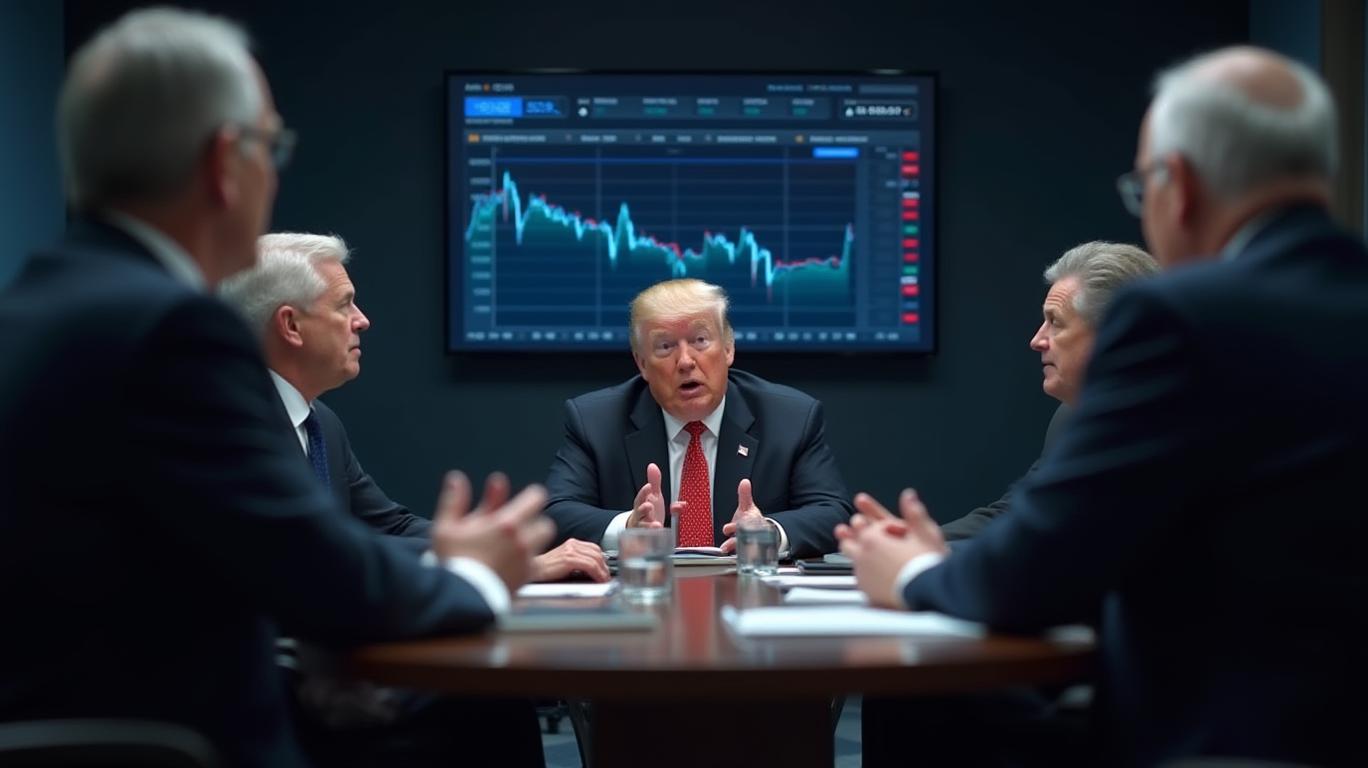Fed in a Bind: Williams’ Caution Amid Tariff Turbulence and Shifting Inflation Dynamics
The Federal Reserve faces an unusual crossroads in 2025, where economic uncertainty has become the dominant force shaping monetary policy. New York Fed President John Williams’ recent remarks reveal a central bank grappling with trade policy volatility, evolving inflation expectations, and a labor market at an uneasy equilibrium. For investors, the path forward requires navigating a landscape where patience—and data—rule.

The Fed’s Delicate Balance: Rates Frozen, Balance Sheet Trimmed
Williams has repeatedly emphasized that the current 4.25%-4.50% federal funds rate is “well positioned” to achieve the Fed’s dual mandates of price stability and full employment. This stance reflects a deliberate pause: the Fed has kept rates unchanged for three consecutive meetings while slowing its balance sheet runoff to $5 billion monthly for Treasuries. This cautious approach,
argues, allows policymakers to gather clarity on the impact of President Trump’s tariffs, which risk derailing inflation and growth.Yet dissent persists. Fed Governor Christopher Waller has argued for faster balance sheet reduction, claiming liquidity remains ample. The divide underscores a broader tension: while Williams sees “very high” downside risks to growth and upside inflation risks, Waller prioritizes unwinding post-pandemic stimulus more aggressively. For investors, this signals a Fed leadership split that could amplify market volatility if external shocks materialize.
Trade Policy as a Wildcard: Tariffs, Inflation, and Consumer Caution
Williams’ Iceland speech in May 2025 laid bare the Fed’s greatest fear: trade policies could destabilize both inflation and employment. The tariffs’ dual impact—raising input costs for businesses while limiting consumer spending—creates a “no-win” scenario.
- Inflation Dynamics: Williams projects inflation to moderate to 2.5% in 2025, with a long-term goal of 2%. However, tariff-driven supply chain disruptions threaten to push this higher. Smaller businesses, lacking the scale to pivot suppliers or access credit, face existential risks that could ripple into broader economic weakness.
- Consumer Behavior: Early signs of caution are emerging. Households are “paring back spending” in anticipation of tariff-induced price hikes, according to Williams. This mirrors a classic “pull-forward” effect: consumers front-loaded purchases of imported goods in early 2025, potentially depleting demand reserves. Retail sales data (expected to show a 0.1% April increase) may soon confirm this slowdown.
The first-quarter GDP contraction (-0.1%)—driven by trade imbalances—adds urgency. Williams stressed that domestic demand (excluding trade) grew at a “solid 3% pace,” but this metric risks overestimating true health if import surges distort the picture.
The Data-Driven Dilemma: When to Act?
Williams’ mantra of “wait-and-see” reflects the Fed’s reliance on hard data to navigate soft spots. Key metrics to watch:
1. Inflation Expectations: The University of Michigan’s survey shows one-year inflation expectations at 3.2% (down from 4.6% in late 2024), but long-term expectations remain stable at 2.7%.
2. Labor Market: Unemployment is projected to hold between 4% and 4.25% in 2025-2026. Wage growth aligns with productivity trends, but slower immigration could trim future labor supply.
3. Policy Certainty: Trade policy clarity—or lack thereof—will determine whether businesses and households stabilize spending.
Investment Implications: Navigating the Fog
For investors, Williams’ caution suggests three strategic themes:
1. Defensive Posturing: With growth risks elevated, prioritize sectors insulated from tariff impacts, such as healthcare or utilities.
2. Interest Rate Sensitivity: The market is pricing in a 25-basis-point rate cut by July 2025, but Williams’ emphasis on “no hurry” may delay this. Monitor the Fed’s June and July meetings for shifts in tone.
3. Dividend Stability: Companies with strong balance sheets and pricing power—think consumer staples or tech leaders—can weather uncertainty better than smaller peers.
Conclusion: The Fed’s Wait-and-See Pays Off—Eventually
Williams’ analysis underscores a critical reality: the U.S. economy is in a holding pattern until trade policy impacts crystallize. With GDP growth expected to remain “solid” at 2% annually through 2026 and unemployment anchored at 4%, the Fed’s restraint appears justified—for now.
However, risks loom large. If tariffs prolong supply chain disruptions, inflation could overshoot Williams’ 2.5% forecast, forcing the Fed to backtrack on its patient stance. Conversely, a sharp consumer slowdown could pressure the Fed to cut rates earlier than markets anticipate.
Investors should heed Williams’ warning: uncertainty itself is the new norm. Position for volatility by diversifying exposures and favoring quality over yield. As the Fed’s “wait-and-see” mantra becomes a mantra for markets, patience—and data—will be the ultimate guides.

Comments
No comments yet